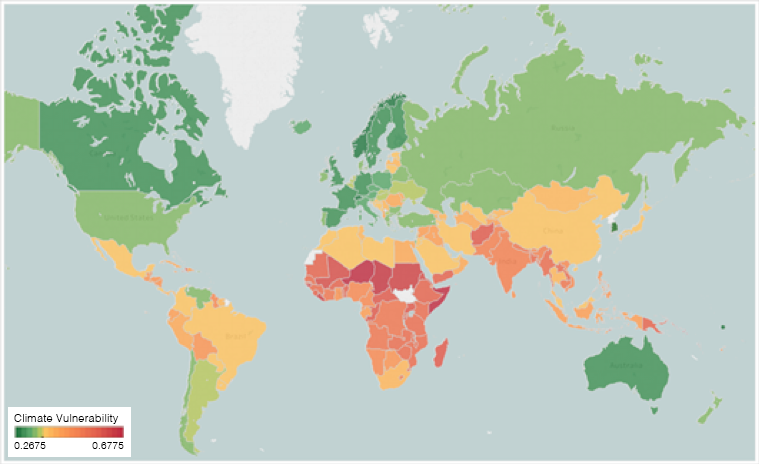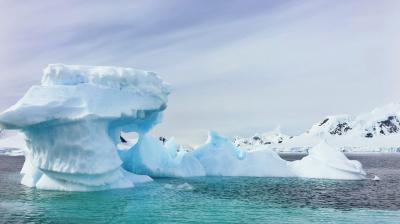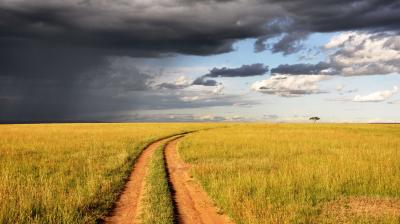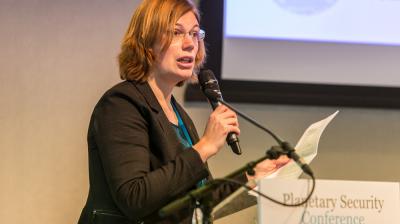This article is part of a series on climate, peace, and security in partnership with the Center on Climate and Security.
Climate change is a “direct and existential threat,” the Council of the European Union concluded in February 2019. In the past half-century, the most vulnerable—particularly across Western, Central, and Eastern Africa, and several countries in the Middle East (see Figure 1)—have been hit disproportionately hard,[1] with climate projections indicating further deterioration.[2] The high level of climate vulnerability in these areas—more often than not combined with limited political, economic, governance, and social readiness to adapt to or mitigate these risks—is increasingly putting strain on populations already struggling to earn a living and feed their families. Poverty, (youth) unemployment, food insecurity, and, ultimately, the erosion of livelihoods will, if unaddressed, lead to population displacement, rural-urban migration, and increased local demand (and thus competition for land and water), fueling social tensions and violent conflict.
The history of political violence and vulnerability to violent extremism in these regions makes addressing the negative effects of climate change even more pressing. Such fragile environments are fertile breeding grounds for terrorist organizations to move in, set up shop, and mobilize the disenfranchised and disillusioned. Climate change is recognized as a threat multiplier, exacerbating existing weaknesses and threats. While the relationship between climate change and violent extremism is not linear, climate change does impose further stress on water and food security, population dynamics, and societal institutions. Declining quantity and quality of water sources combined with the mushrooming of dams across water-poor areas fuels regional competition, further straining people’s ability to provide for their families.

Figure 1. Exposure, sensitivity, and capacity to adapt to the negative effects of climate change.
Taking advantage of growing instability in Syria and Iraq, the Islamic State was able to do just that. Already ranked among the poorest worldwide, Iraq’s water infrastructure further deteriorated under Islamic State rule. Through capture, control, sabotage, and looting of water installations, the Islamic State was able to gain control over water across water-poor areas in northern Iraq. To expand their ranks, the Islamic State actively recruited among suffering farmers who were forced to give up their farms or sell their cattle due to water scarcity that was partially orchestrated by the violent extremists. Joining the Islamic State would provide them with money, food, and a share in their spoils of war—so was promised—and those who resisted were forced to hand over a share of their harvest, were cut off from water and electricity, put to trial, or killed.
Gaining control over water was not the Islamic State’s only strategic interest. Following the killing of a high-level strategist, an Islamic State blueprint outlined their strategic rationale to seize mills, silos, and grain stockpiles. Controlling such stockpiles, similar to the control of water, would allow them to exert influence over local communities.
Similar dynamics have unfolded in the Sahel. In March 2017, the United Nations Security Council recognized “the adverse effects of climate change and ecological changes” on the stability in the Lake Chad region, pointing out the effects of water scarcity, drought, desertification, land degradation, and food insecurity. As a result of climate change combined with rapid population growth and poor governance, the lake, which provides water to more than 30 million people, has shrunk by 90% since the 1960s, leading to the displacement of millions of people. To make matters worse, Boko Haram was able to monopolize access to parts of the lake. These factors combined allowed Boko Haram to lure young men for their campaign of terror, as they often lacked sustainable alternatives.
While the relationship between climate change and violence is not linear and context dependent, climate change-induced water and food insecurity opens a window of opportunity for terrorist organizations. It provides them with a mechanism to exert influence over people. Across Africa and the Middle East, hundreds of millions of the world’s poorest depend upon agriculture and livestock for their survival. The effects of climate change, oftentimes paired with poor resource governance to begin with, will further increase such scarcity, putting pressure on the ability of people to feed their families. Joining the ranks of a terrorist organization, such as Boko Haram or the Islamic State, for work or food then becomes a tempting, or sometimes even the only viable alternative.
The warning signs are flashing red. Hence, it is imperative that we routinize and institutionalize the attention for climate change in our counter-terrorism efforts. To effectively address the underlying drivers of violent extremism, it requires improving both our in-depth understanding of and intel on how climate change fuels violent in different contexts, both directly (e.g., weaponizing (scarcity) of resources) and indirectly (e.g., scarcity as a tool for recruitment).
Moreover, combating the threat stemming from terrorist organizations requires more than just a military solution. Climate change acts as a threat multiplier, especially in fragile countries that are held back by weak governance, poor economic perspectives, food- and water scarcity, and failing local (security) institutions. Stabilization efforts need to address this full spectrum of weaknesses and threats comprehensively.
But most importantly, it requires the political courage to tackle the urgency of this issue. To effectively address climate change requires large consumer countries to invest significantly in sustainable alternatives, for example, by making the transition away from non-renewable energy resources, such as oil coal and natural gas—even if that opposes immediate political and economic interests. The countries that are hit hardest by the effects of climate change are not the largest consumers. If we will not pay our share of the price, they will.
Follow @MiddendorpTom & @reinierbergema on Twitter
[1] The Netherlands’ Ministry of Foreign Affars, Climate Change Profile: East African Great Lakes and Ruzizi Plains. February, 2019; The Netherlands’ Ministry of Foreign Affars, Climate Change Profile: Greater Horn of Africa. February, 2019; The Netherlands’ Ministry of Foreign Affars, Climate Change Profile: Iraq. February, 2019; The Netherlands’ Ministry of Foreign Affars, Climate Change Profile: Lebanon. February, 2019; The Netherlands’ Ministry of Foreign Affars, Climate Change Profile: West African Sahel. February, 2019.
[2] Collins, M., R. Knutti, J. Arblaster, J.-L. Dufresne, T. Fichefet, P. Friedlingstein, X. Gao, W.J. Gutowski, T. Johns, G. Krinner, M. Shongwe, C. Tebaldi, A.J. Weaver and M. Wehner, 2013: Long-term Climate Change: Projections, Com-mitments and Irreversibility. In: Climate Change 2013: The Physical Science Basis. Contribution of Working Group I to the Fifth Assessment Report of the Intergovernmental Panel on Climate Change [Stocker, T.F., D. Qin, G.-K. Plattner, M. Tignor, S.K. Allen, J. Boschung, A. Nauels, Y. Xia, V. Bex and P.M. Midgley (eds.)]. Cambridge University Press, Cambridge, United Kingdom and New York, NY, USA.








